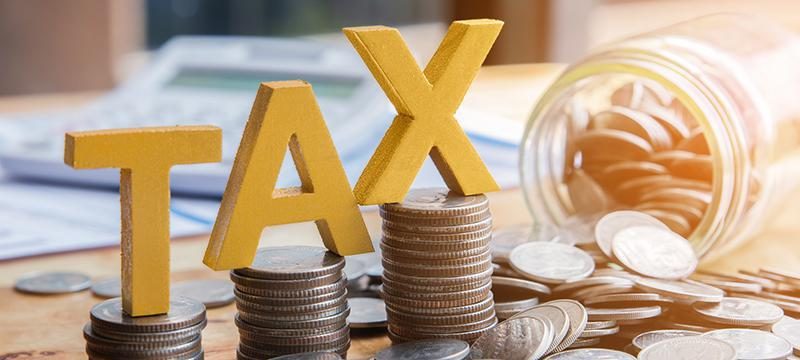The Income Tax department has issued guidelines for applying TDS under Section 194S on the transfer of Virtual Digital Assets (VDAs).
As per Section 194S of the Income Tax Act, the person making a payment on the purchase of Virtual Digital Assets (cryptocurrencies, NFTs, etc.) shall be responsible for deducting TDS at the rate of 1% of the consideration paid on cryptos. The said provision is effective from 1st July 2022.
It is important to note that if the aggregate value of the consideration payable on crypto transactions with a resident is less than Rs 10,000 during a financial year, there is no requirement to deduct TDS.
However, for certain specified persons, the threshold limit to deduct tax under Section 194S is Rs 50,000. The specified persons could be:
- An individual or Hindu Undivided Family (HUF) with a business turnover not exceeding Rs 1 crore in a preceding year.
- An individual or Hindu Undivided Family (HUF) with professional receipts that are not more than Rs 50 lakh in a preceding year.
- An individual or HUF that does not have a business income at all.
According to the circular, the calculation of the threshold (Rs 50,000/ Rs 10,000) mentioned above is with respect to the financial year and shall be counted from 1st April 2022.
Who should deduct TDS under Section 194S?
I. Direct crypto transfer to the seller in cash
The plain reading of the provisions is that the transferor must deduct and deposit the TDS amount before releasing the consideration. Thus, the guidelines state that in the case of a direct buyer-seller transaction, the buyer will be responsible for deducting TDS.
II. For transactions through the crypto exchanges in cash
The compliance part was ambiguous as buyers will not have all the details of the seller if the transaction is made through crypto exchanges. For the same, the guidelines clearly state who is responsible for deducting TDS at different stages (direct payments or through brokers).
Where crypto being transferred is owned by a person other than the exchange
- When no broker is involved or the ownership is not transferred to the broker
Tax must be deducted only by the exchange when crediting or making payment to the seller.
- When the broker is involved and the ownership is transferred to the broker
Where the credit/payment between the exchange and the seller is through a broker (and the broker is not the seller), the responsibility to deduct tax will be on both the exchange and the broker.
- When the ownership is transferred to the broker
Further, where the broker is the owner of the VDA (ownership transferred), then the broker will be the seller, and the exchange needs to deduct tax on the amount being credited or paid to the broker by the exchange.
Where crypto being transferred is owned by an exchange
However, when the exchanges transfer the VDAs to the buyer, the responsibility to deduct TDS has been shifted to the exchanges. It is because, practically, the buyer may doubt whether the VDA being transferred is owned by the exchange or not for tax deduction under section 194S of the Act. So, exchanges have to enter into contractual agreements with the brokers or their customers wherein they can deduct the TDS that the buyer is supposed to deduct. They must maintain their entire transaction trail and disclose these transactions in their income tax returns.
III. For transactions where the consideration is in kind or in exchange for another VDA
- If the transaction is not through an exchange
If one VDA is being exchanged with another, and both of them are buyer and seller, then both need to pay tax with respect to the transfer of VDA and show the evidence to the other before exchanging the VDAs.
In cases where the transaction is partly in kind, and there is no sufficient cash to meet the TDS liability, the person responsible for paying such transaction amount must ensure that the tax required to be deducted has been paid in respect of such transaction before releasing the consideration.
- If the transaction is through an exchange
Further, if the transaction is through an exchange and the consideration is paid in kind or in exchange for another VDA or partly in kind and cash, then there will be practical difficulty in complying with the TDS provision. Hence, an alternate option is provided where the exchange can deduct tax based on the written agreement contractual agreement with the buyers/sellers. The government has provided a mechanism for the exchanges so as to exercise such an option.
The mechanism to be adopted by the Exchange is-
- In the case of the VDA-VDA trade, the TDS is deducted in kind. For example, where Deso is exchanged with Monroe, 1% Deso and 1% Monroe will be deducted as tax under Section 194S by the Exchange, and the balance(Monroe and Deso) is transferred to the customer. For every such VDA-VDA trade, the Exchange shall maintain the trail of transactions evidencing a deduction of 1% of the consideration.
- In case the TDS deducted is in the form of non-primary VDAs, like in the above example-Monroe, Deso, the exchanges are required to immediately convert the TDS for non-primary VDAs (Monroe, Deso) into an equivalent of primary VDAs (BT, ETH, USDT, USDC) that have a ready INR market.
- All the TDS should be accumulated for the day (from 00.00 hours to 23.59 hours), whether the TDS is in the form of primary VDAs or converted into primary VDAs.
- The Exchanges are required to place a market order at 00.00 hours for the tax withheld in the form of primary VDAs (or converted into primary VDAs) based on the market rate existing at that time. These sell market orders shall be executed based on the open buy orders in the market. Price and quantity data for every matched trade shall be maintained by the Exchange and shall be available for verification. It shall be verifiable from the system coding that the conversion into INR happened at the first available buy order based on the prevailing buy order book of the respective Exchange at the time of conversion. The relevant Exchange liquidating the VDA shall be prohibited from being a buyer for these VDAs.
- A contract note is to be issued to the customer via email to provide the details of tax withheld in kind under Section 194S, and the amount of INR realised from the same.
- The Exchange should deposit the tax deducted in kind and converted in INR as per the above procedure to the government as per the prescribed timelines.
Conversion of TDS in kind– There will be no further TDS if the TDS withheld in kind is converted into INR or converted from one VDA to another VDA and then into INR.
Consideration amount for TDS calculation
It is further clarified that the tax required to be deducted under section 194S of the Act shall be on the “net” consideration after excluding GST/charges levied by the deductor for rendering service.
What changes for exchanges?
As seen above, the burden of compliance of TDS deduction is mostly on the Exchanges. The tax deducted is required to be reported to the government in Form 26Q. Moreover, if there is a written agreement between the Exchange and the broker/seller for shifting the responsibility of tax deduction, the Exchanges are required to furnish a quarterly statement in Form 26QF before the specified due date mentioning all the details of such transactions, and report the same while filing the income tax return.
What changes for investors?
The investors are required to deduct tax in case of peer-to-peer transactions. In cases where the consideration is in kind or there is a swap of VDAs, the tax deducted must be deposited to the government before releasing the consideration.
The specified persons deducting tax under Section 194S are required to issue a TDS certificate in form 16E to the person on whose behalf TDS is deducted. The certificate must be issued within 15 days of furnishing the challan-cum-statement in Form 26QE.
Once the seller initiates a sell transaction, the net consideration (total consideration after reducing commission, discount, GST, etc.) will be credited to the seller’s wallet. When you withdraw the same into your registered bank account, there are no additional taxes.
The seller’s Form 26AS will show all the TDS deductions details in every quarter. They can adjust the deductions against their total tax liability while filing ITR.
For any clarifications/feedback on the topic, please contact the writer at namita.shah@clear.in

I’m a chartered accountant and a functional CA writer by profession. Reading and travelling in free time enhances my creativity in work. I enjoy exploring my creative side, and so I keep myself engaged in learning new skills.





